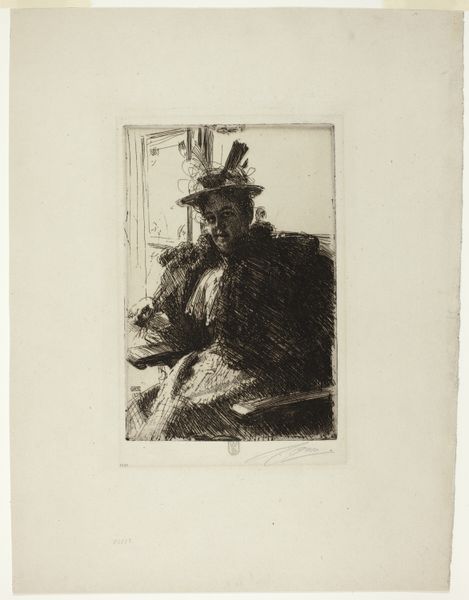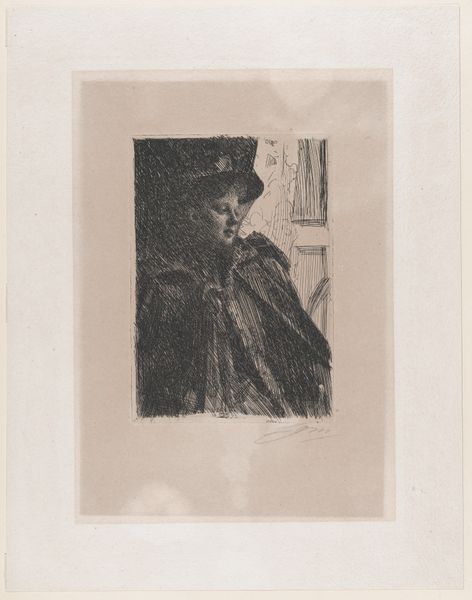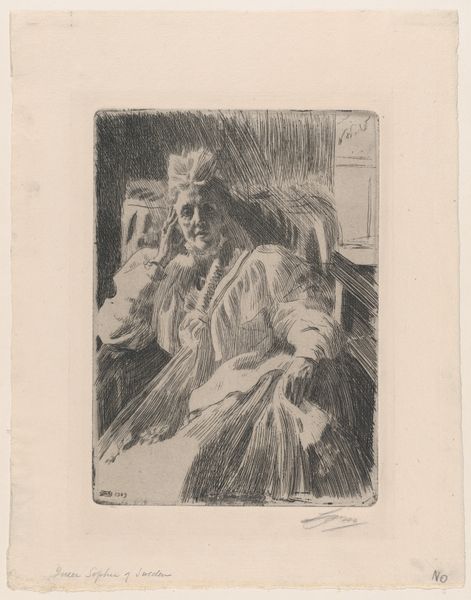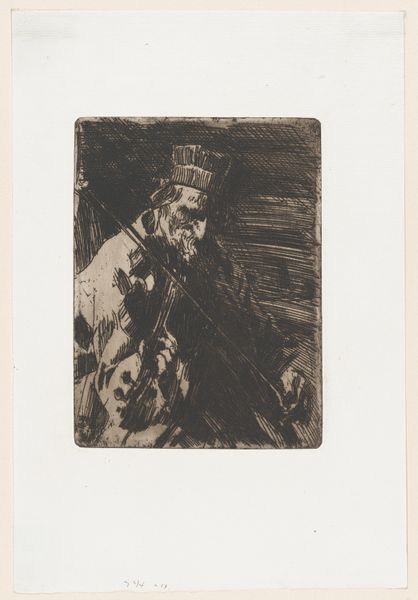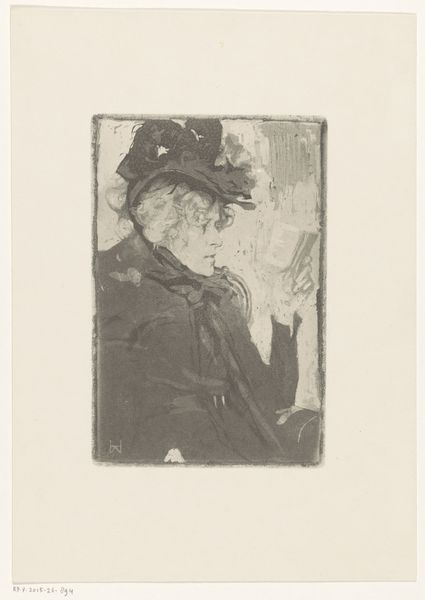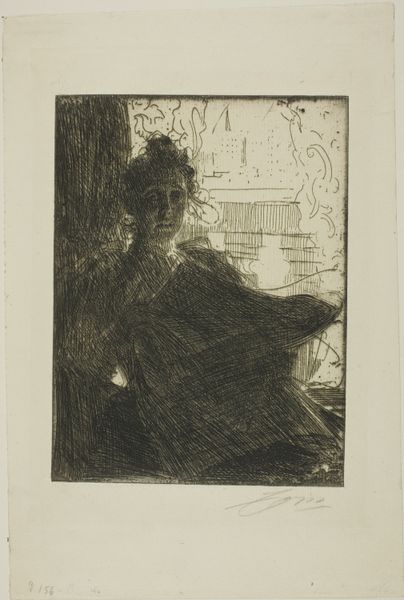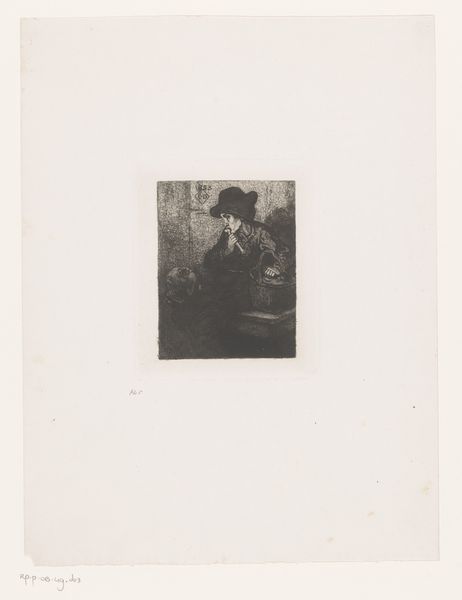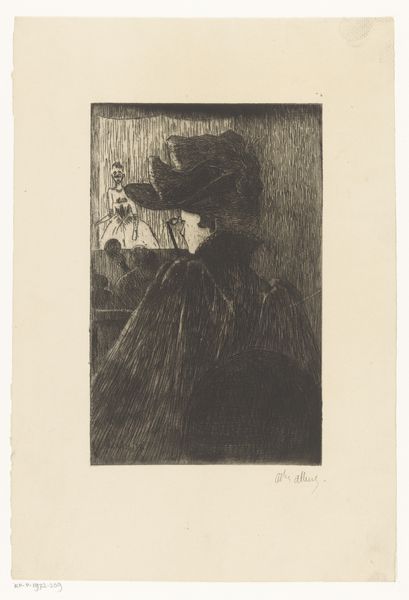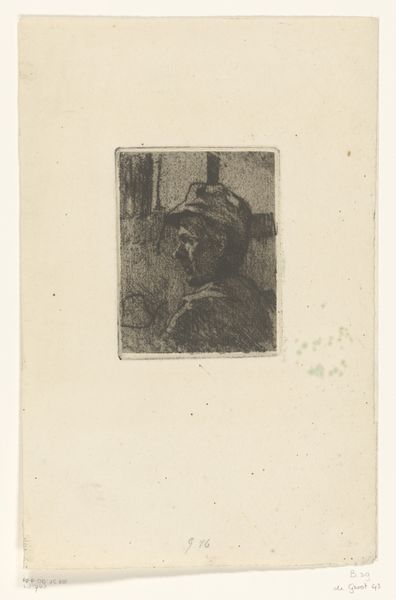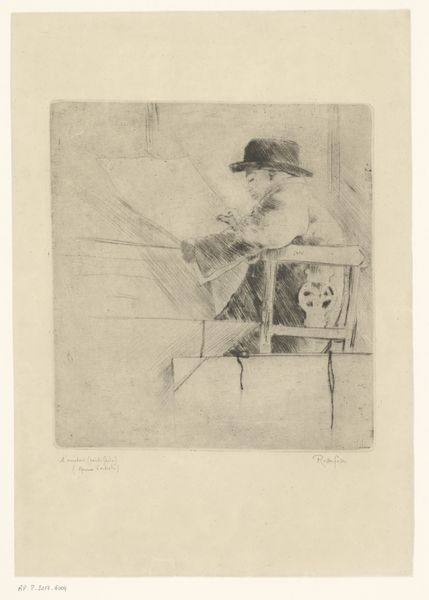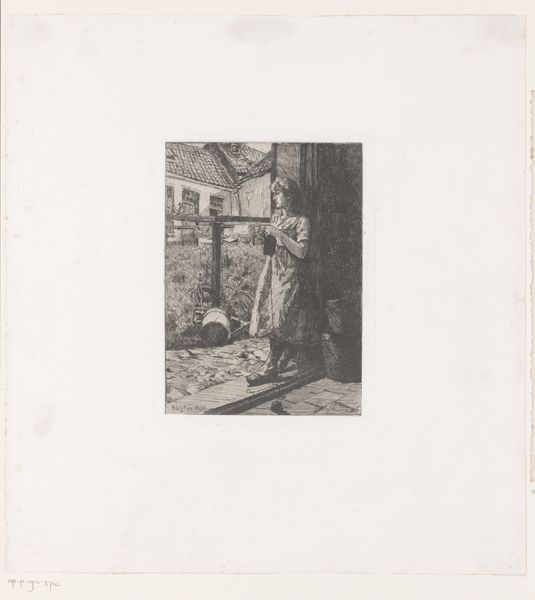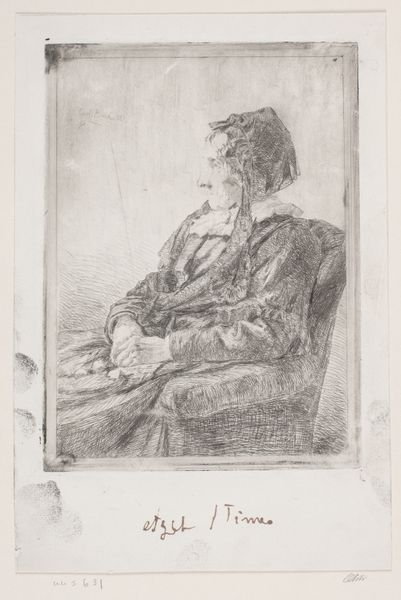
drawing, print, etching, ink
#
portrait
#
drawing
#
ink paper printed
# print
#
etching
#
ink
#
realism
Dimensions: Plate: 9 3/4 in. × 7 in. (24.7 × 17.8 cm) Sheet: 15 11/16 × 11 3/4 in. (39.9 × 29.9 cm)
Copyright: Public Domain
Curator: Here we have Anders Zorn's "King Oscar II," an etching done in 1898. It is currently housed here at the Metropolitan Museum of Art. Editor: There's a gravitas to this portrait, even within the confines of etching. He's rendered with so much concentrated line work, giving him a strong presence despite the rather humble medium. I also appreciate Zorn’s delicate strokes which soften the King's gaze. Curator: Absolutely. Zorn's choice of etching offers a fascinating insight into late 19th-century power dynamics. Consider the context: Monarchies were grappling with burgeoning democratic ideals. Rendering a King, traditionally depicted in grandiose oil paintings, in a more accessible print form, could suggest an attempt to bridge the gap between royalty and the common person. What kind of messages and values can you uncover by analyzing his insignia? Editor: The maritime elements stand out. The King’s naval cap, for example, implies navigation, guidance and national strength during a time of social shifts. It visually connects him with the navy and maritime traditions, thus establishing his dominion. We also see similar symbolism on the background which features images of a boat that emphasizes the symbolism. These details resonate on an emotional level and underscore notions of stability in an era of change. It’s very savvy propaganda. Curator: Indeed, and if we think about artistic movements from the turn of the century, realism focused on reflecting society back at itself. Zorn created a subtle comment on social tensions and King Oscar’s legacy. His depiction speaks volumes about the complicated nature of power, representation, and public perception. Editor: The brilliance of Zorn as a printmaker is the feeling of volume he gives to King Oscar’s face using strokes that emphasize a particular light source. He manages to express dignity without romanticizing, something that a royal portrait of the time would normally include. This shows the complexity of symbolic portraiture that goes beyond likeness. Curator: The print certainly gives one much to ponder when assessing society through art, history, identity and power. Editor: A memorable study in symbols, indeed!
Comments
No comments
Be the first to comment and join the conversation on the ultimate creative platform.
